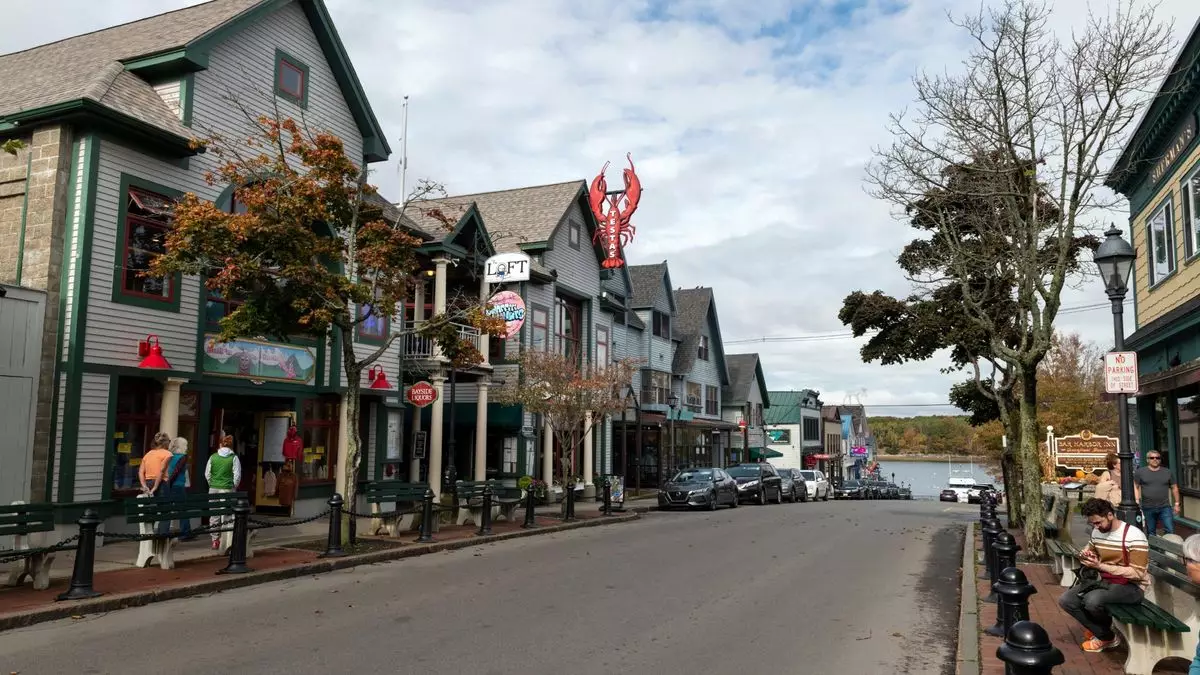In Bar Harbor, Maine, a brewing debate over tourism management reflects the delicate balance between local lifestyle preservation and economic vitality. Residents will soon face a pivotal decision in November concerning a cap on cruise ship passengers, a policy they instituted through a referendum just two years prior. Initially, this cap limits daily cruise visitors to 1,000, a measure aimed at controlling the influx of large ships that many locals find disruptive during peak tourist seasons. However, this decision has great implications for the town’s economic framework, one that relies heavily on tourism.
The driving force behind the introduction of this cap can be traced back to a growing sentiment among residents. Many have voiced concerns over overcrowding and the erosion of local culture caused by large cruise ships. Yet, opposition to this limit is equally robust; local businesses—dependent on tourist dollars—argue that such caps could jeopardize their operations, leading to calls for a repeal of the stringent limits that restrict the number of visitors.
The Council’s Response: Adjusting the Limits
Should the residents choose to repeal the 1,000-passenger limit, the town council has a contingency plan awaiting approval—an increased capacity of 3,200 passengers per day. This plan reflects the council’s acknowledgment of local business needs while still aiming to manage visitor inclusivity. Before the previous referendum was approved, capacity limitations shifted seasonally, with allowances of up to 5,500 passengers during peak months. Such fluctuations provide a glimpse into the complexity of managing a beloved tourist haven while safeguarding its charm.
The introduction of legal challenges adds yet another layer of difficulty to this issue. Following the original referendum’s passage, businesses filed lawsuits contesting the cap. The prolonged legal battle culminated in a U.S. District Court ruling that allowed the passenger limitations to take effect. Despite these restrictions, many cruise lines had already planned their itineraries, creating an intricate situation where certain port visits remain exempt due to prior agreements—known as “grandfathering.” This has left many businesses feeling the pinch of an uncertain future.
The Economic Tug-of-War
As the clock ticks down to the referendum, Bar Harbor finds itself in a heated tug-of-war between conflicting interests. On one side, residents have expressed a desire to reclaim their town’s peaceful atmosphere, weary of the chaotic tourist seasons brought on by large cruise ships. On the other hand, local businesses rally against measures that threaten to cut visitor numbers drastically; estimates suggest that a continued 1,000-passenger cap could potentially halve the 250,000 cruise visitors recorded in 2019.
This situation presents a microcosm of a larger issue facing many popular tourist destinations: how to foster a sustainable tourism model that benefits the economy while respecting local lifestyles. As Bar Harbor grapples with this referendum, the outcome may set a precedent for how tourism is managed in similar communities across the country.
The upcoming vote in Bar Harbor holds significant implications for the town’s identity and economic future. Regardless of which way it sways, the struggle encapsulates a broader conflict between preserving local culture and ensuring economic viability through tourism. The challenge remains: how can Bar Harbor foster an environment that satisfies both residents and businesses, creating a harmonious coexistence that benefits all?


Leave a Reply